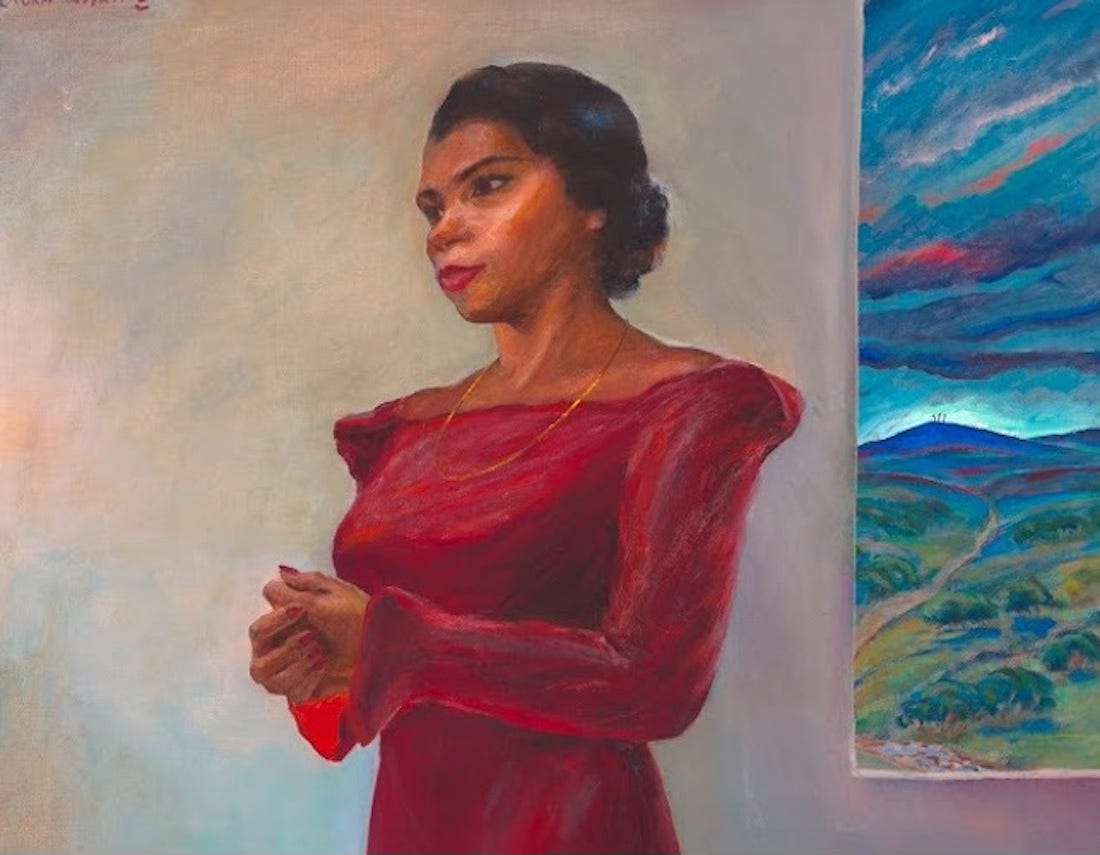Laura Wheeler Waring (Art Drop #10)
Let us take a moment to consider a major artist of the Harlem Renaissance and her portrait of Marian Anderson

As Women’s History Month draws to a close and Easter approaches, what could be more appropriate than Laura Wheeler Waring’s portrait of singer Marian Anderson?
Some of Wheeler Waring’s work is currently on display as part of a major retrospective at the Metropolitan Museum of Art. The exhibit is called The Harlem Renaissance and TransAtlantic Modernism. And there’s quite a good 6-minute piece from the PBS NewsHour, which notes the show’s long-overdue attention to Laura Wheeler Waring.
Although others are perhaps better known these days,
she was a major figure of that movement, which has been described as an “intellectual and cultural revival of African American music, dance, art, fashion, literature, theater, politics and scholarship centered in Harlem, Manhattan, New York City, spanning the 1920s and 1940s.”1
Born in 1887, Laura Wheeler Waring came from an educated family with five previous generations of college graduates before her. She studied art in Europe before and after World War I and eventually spent 30 years teaching art at Pennsylvania’s Cheyney University. 2
During her relatively brief life—she died in 1948 at age 60—she was a highly regarded illustrator and portrait artist. W.E.B DuBois, James Weldon Johnson, and Alice Dunbar Nelson all sat for her.
But it is nearly Easter, so I would like to draw your attention to her 1944 full-length portrait of Marian Anderson (detailed above).
That’s because history will never forget what happened on Easter Sunday of 1939 or the events that led up to it.
Many of you already know the story. In 1939, when segregation was still legal, the Daughters of the American Revolution (D.A.R.) refused to allow Anderson to sing before an integrated audience at Constitution Hall. The incident gained international attention.
If you don’t think it matters who’s in the White House, consider this: Eleanor Roosevelt was First Lady at the time. I suppose she could have said, “I really don’t care, Do U?” But Eleanor decided to speak to Franklin about it instead.
The Roosevelts contacted nearly two dozen associates, who sponsored an open-air concert for Anderson at the Lincoln Memorial on Easter Sunday, April 9, 1939. Seventy-five thousand people showed up, and millions more listened to Anderson sing on the radio.
It is easy to think too much about people like the D.A.R.
So much so, that we sometimes forget people like Eleanor and Franklin and the 75 thousand Americans who decided to show Marian Anderson and the world that we are not all small-minded bigots. That most of us are bigger than that. Better than that.
History will never forget the way Americans showed up that Easter Sunday. And we mustn’t either.
Laura Wheeler Waring painted Marian Anderson’s portrait five years after that concert. And Anderson went on to become the first African American woman to sing at the Metropolitan Opera in 1955. Her numerous awards include a lifetime Grammy, the National Medal of Arts, the Presidential Medal of Freedom, and the Kennedy Center Honors.
Below is a 6-minute clip from Anderson’s Easter Sunday Concert at the Lincoln Memorial. Watching it always gives me goosebumps. Maybe you’ll get a few of them too.
Whatever your religious affiliation, persuasion, or lack thereof may be, I hope this week of high holy days will be filled with peace and good will for you—as well as hope for the better world we would all like to live in.
©2024 Andrew Jazprose Hill
Thanks for reading today’s Art Drop.
If you have another 3 minutes and 40 seconds, here’s an A.I-generated look at some of Laura Wheeler Waring’s other work.
Chambers, Veronica; May-Curry, Michelle (21 March 2024). "The Dinner Party That Started the Harlem Renaissance". via Wikipedia.
Laura Wheeler Waring at the Connecticut Women's Hall of Fame via Wikipedia




So insightful, a pleasure to learn of another invaluable life and work
It devastates me to think I've gone so long and didn't know Laura Wheeler Waring! Thank you for writing this. I'm familiar with the story of Marian Anderson, but Laura is entirely new to me. And what a lovely painting! It's so serene and soft. I'm completely transfixed by her work. Wonderful post as always Andrew!